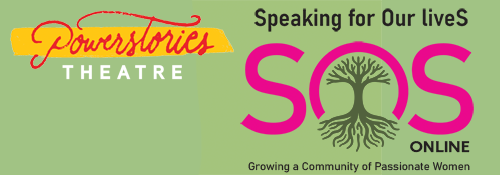Mary Harris ‘Mother’ Jones
Mary Harris Jones was born into a poor family of tenant farmers in Ireland. Her father and grandfather rebelled against injustices imposed by their British overlords. Her grandfather was hanged; her father was about to be hanged, before he made his escape to America.
In school, Mary an exceptional student, and had hoped to become a school teacher. But she was disillusioned by the low pay and terrible teaching conditions. Instead, Mary took up dressmaking and settled in Memphis, Tennessee. She met her husband, George, and started a family.
George, like his father and grandfather in-law, before him, spoke-out against the social injustices of the day. Within seven years after arriving in Memphis, all four of Mary’s young children had died of yellow fever, and George had died a tragic industrial accident. At 37 years old, a devastated Mary Jones was all alone. Her salvation was her ability to look outside of herself, and see the needs of others around her. Before long, Mary Harris Jones was taking care of yellow fever victims around Memphis.
Mary Jones moved to Chicago and used her sewing and dressmaking skills. She fumed when she saw that her well-to-do dressing-making clients, living on Chicago’s Lake Shore Drive, couldn’t care in the least about those living and dying, in hovels right beneath their noses. In 1871, tragedy struck Mary Jones again. Four years after moving to Chicago, the Great Chicago Fire destroyed her home, her shop, and all of her worldly possessions. Once again, amidst her great personal pain, Mary Jones was able to look outside of herself. She organized soup kitchens and found shelters for the so many left homeless.
One day, in the basement of the homeless shelter, where she herself was living, some garment workers were holding a meeting. Mary Jones attended. Their message on the plight of the workers resonated, to such an extent that Mary spent the next 50 years travelling across America speaking-out for abused laborers. In doing so, she never had a permanent home. Her heart was too busy promoting the needs of the dispossessed and the many mistreated working poor, especially the children.
In her time, it was estimated two million children were working in mines, mills, and factories. Destitute children as young as six years old were working 16-hour days, and in miserable conditions. Besides exploited children, Mother Jones spoke out on behalf of miners, textile and railroad workers, as well as many others. Mother Jones also was a strong advocate of a woman’s right to vote in America.
Conservatively-dressed Mother Jones, often wearing a bonnet, was no pushover. She spoke the language of the streets. And she could swear with the best of them.
During her lifetime, Mother Jones was labeled ‘the most dangerous woman in America.’ As a result of her tireless efforts, federal and state laws were passed. And laws already on the books were finally enforced.
When Mother Jones died in 1930, she wished to be buried in a miner’s cemetery next to those coal miners who died in a mine riot 32 years earlier.
To learn more, read Rick’s tenth nonfiction book: “THEY Made America Great–31 Endearing Legacies Worth Heeding Today.” Visit www.rickrhodes.com.
